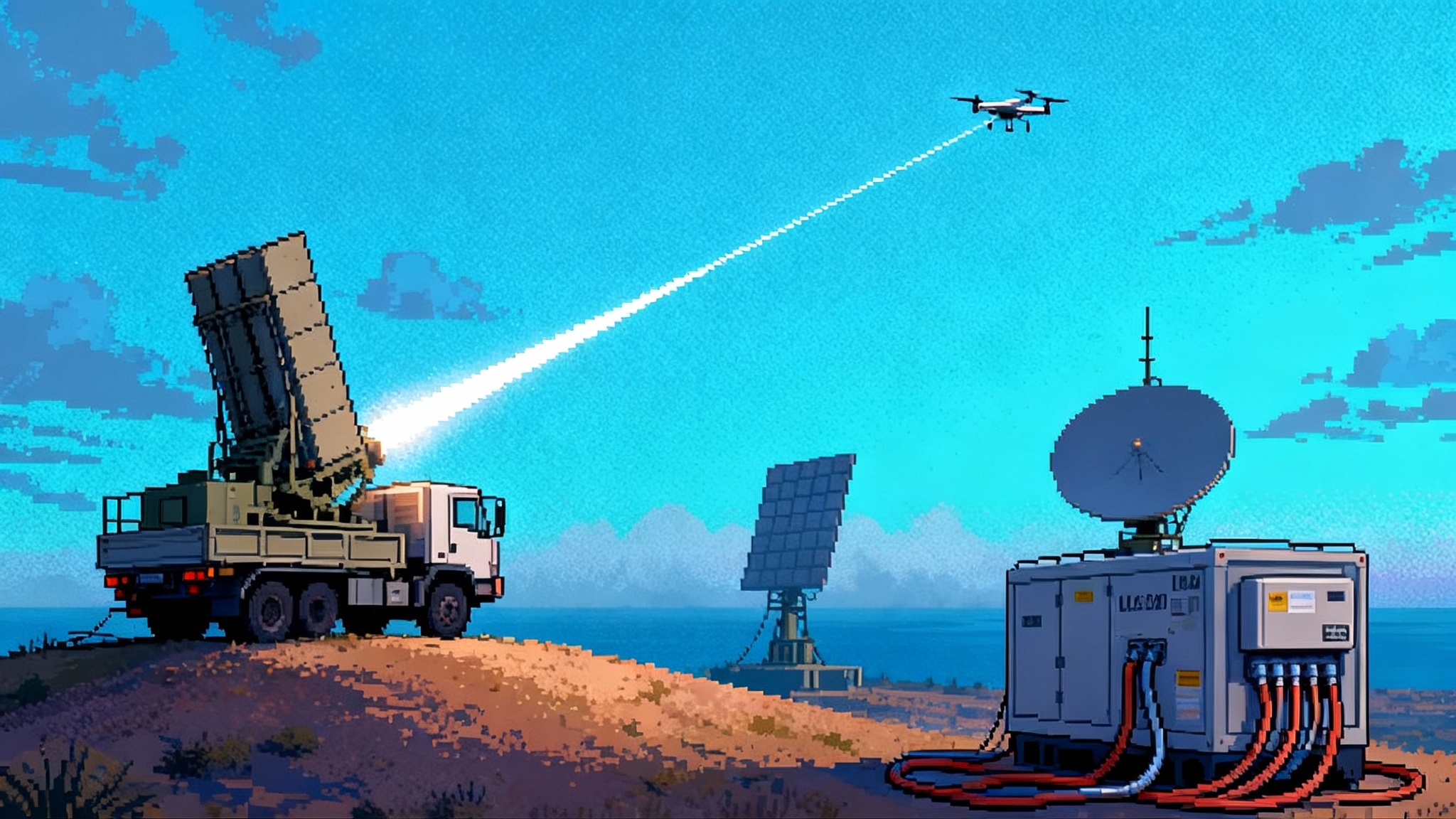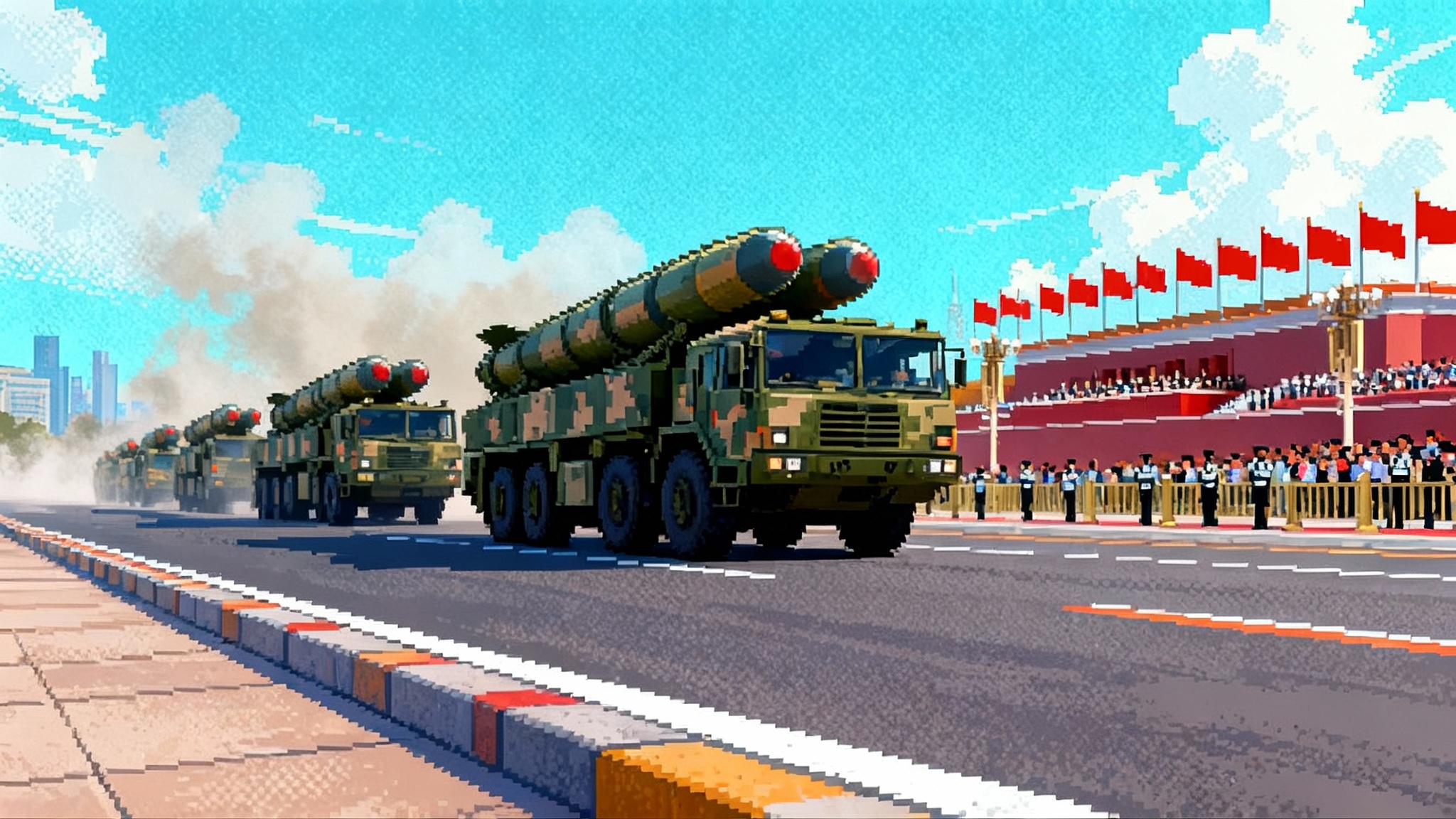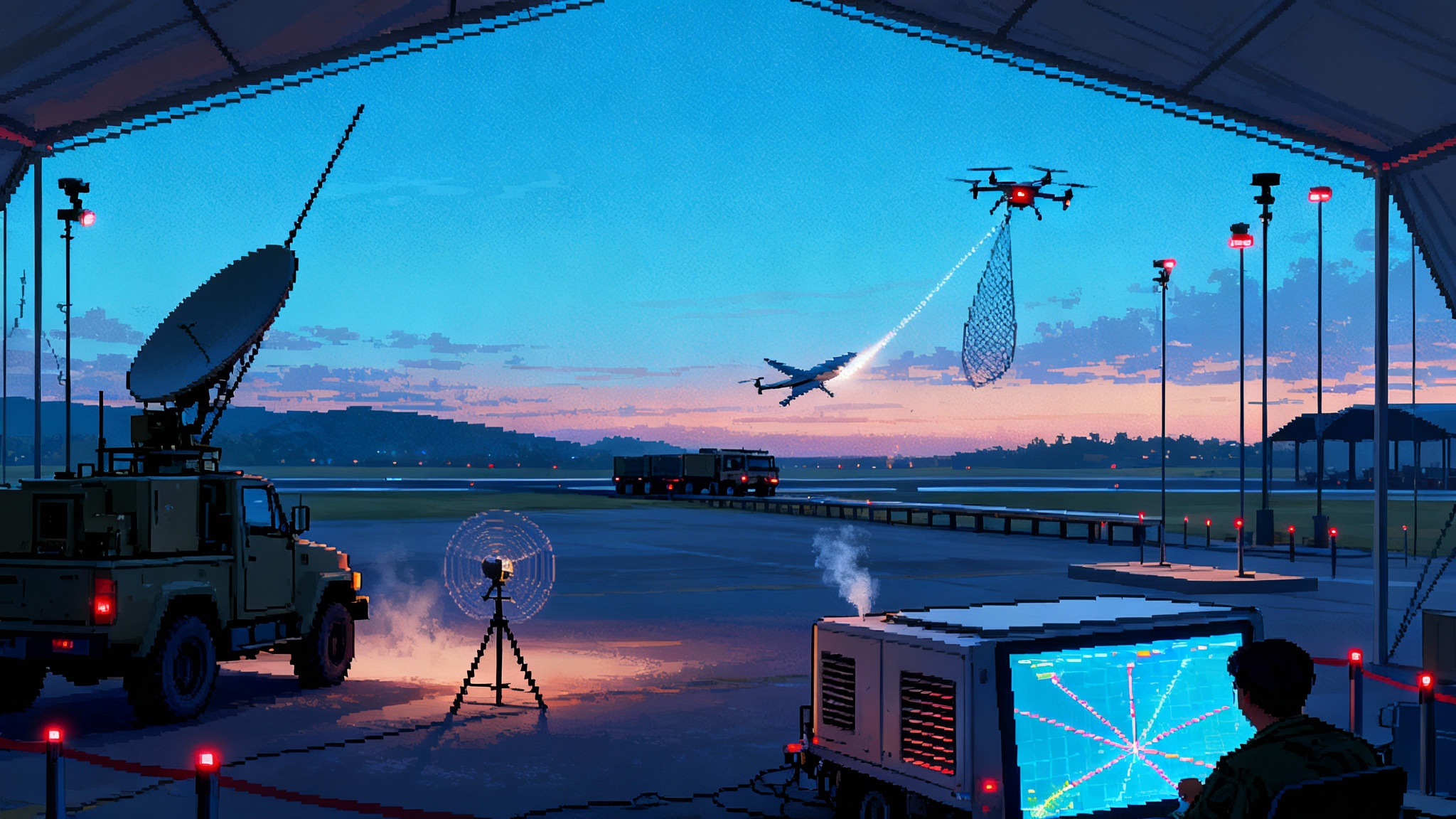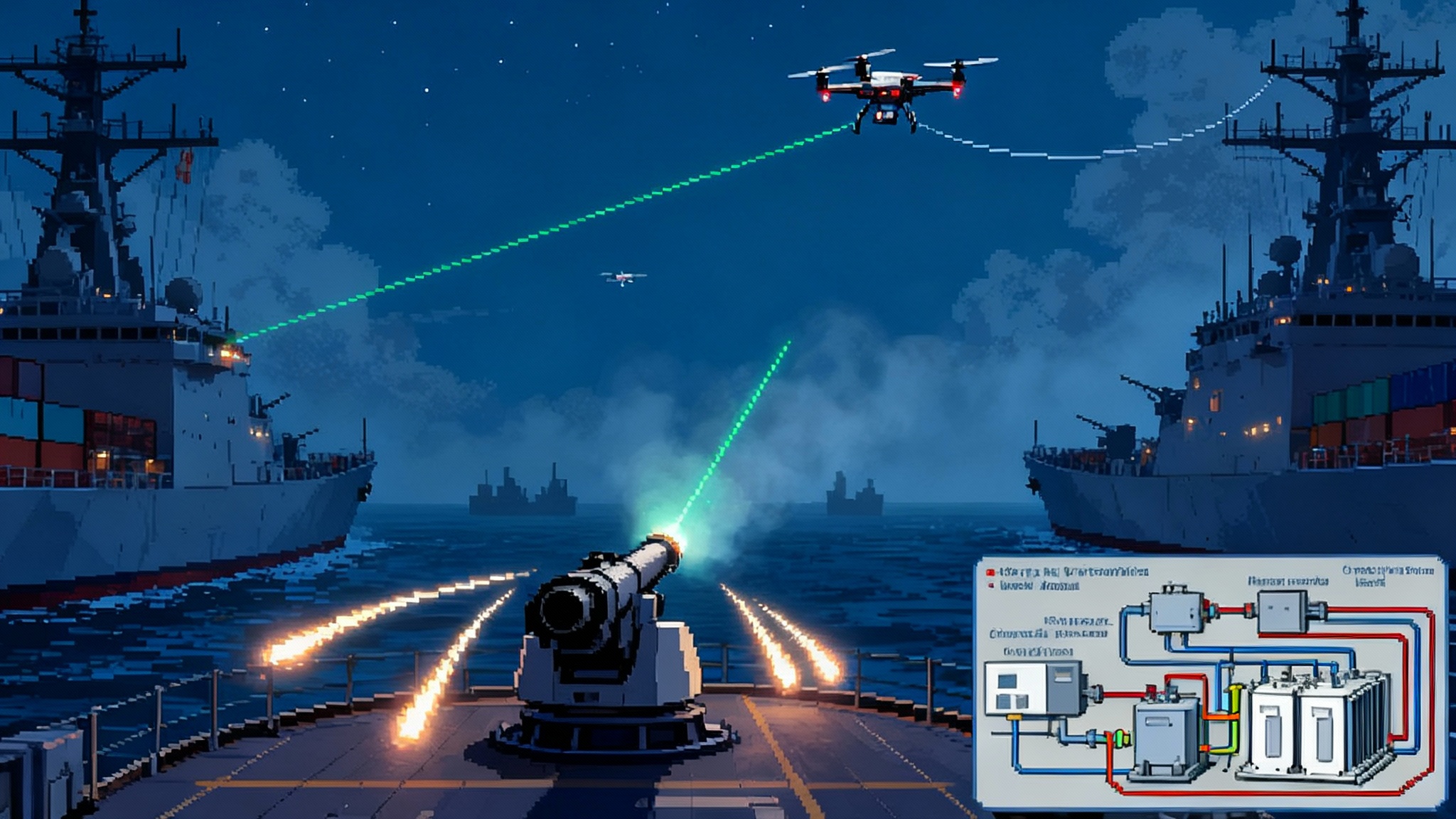Iron Beam Goes Operational: Lasers Flip Air-Defense Math
Israel says the Iron Beam laser will enter service later this year, turning photons into a practical shield for rockets, mortars, and drones. Here is how it could bend the economics and reshape layered air defense.

The announcement that flips the math
On September 17, 2025 Israel said its Iron Beam high‑energy laser will be ready for military use later this year, after completing a full series of tests. The move marks the first time a country has declared a laser air‑defense system ready for operational fielding, not just demonstrations. That single step matters because it turns directed energy from a lab project into a planning factor for commanders and treasuries alike. The core claim is simple yet disruptive: if you can burn down rockets, mortars, and drones with photons that cost pennies per shot, you can finally break the economics of massed cheap threats. Reuters reported the milestone.
For deeper background on the unit economics, see our explainer on Iron Beam cost‑per‑shot math.
Why a laser changes the cost curve
For a decade, the world has watched the paradox of short‑range air defense. Attackers launch low‑cost threats in volume. Defenders respond with exquisite interceptors that can run tens of thousands of dollars per round. The defender often wins tactically and still loses strategically on cost. A practical laser flips that equation.
Here is the simple math that makes finance officers smile:
- Electricity is cheap and storable. A 100 to 150 kilowatt class laser firing for a few seconds consumes well under a kilowatt‑hour per engagement. Even if you triple that to account for losses, cooling, and reserves, the energy cost is pocket change. The real costs are power generation, cooling, maintenance, optics, and crews, which spread across many shots.
- Interceptors remain essential. Missiles still handle bad weather and complex threats, but if you can offload a large share of small rockets, mortars, and quadcopters to a laser, you preserve missiles for what only missiles can kill. That saves money and stockpile depth.
- Compounding advantage. In a 1,000‑shot month, a battery that substitutes photons for even half of those shots can avoid procuring hundreds of missiles. That is real relief for magazines and production lines.
Put differently, lasers do not end the arms race. They change the unit economics inside it.
What makes Iron Beam work
Iron Beam is a layered system, not just a power number. Its effectiveness rests on five technical pillars that are as prosaic as they are decisive.
Power generation and electrical storage
High‑energy lasers depend on clean, stable power. A truck‑sized generator or a grid connection feeds rectifiers and energy storage modules. Storage smooths the draw and supports rapid re‑engagement. Think battery banks or supercapacitors acting as a shock absorber between the generator and the laser. The more stable the power, the more consistent the beam quality.
Thermal management is the make‑or‑break
Lasers turn a lot of electricity into waste heat. If wall‑plug efficiency is a few tens of percent, you must reject several times the beam power as heat. That means liquid cooling loops, heat exchangers, chillers, and radiators the size of small billboards. Thermal design sets your duty cycle. If a battery is the heart, the cooler is the lungs. Overheat and you lose beam quality or must pause between shots, which is exactly what attackers will try to exploit.
Beam control and adaptive optics
Holding a fine spot on a fast, wobbling target through turbulent air is hard. Iron Beam’s beam director, sensors, and real‑time optics corrections are the quiet stars. Rafael has publicly emphasized a new laser director that improves range, accuracy, and efficiency, a hint at better tracking and turbulence correction, which in turn shortens dwell time and extends reach. The company describes those improvements in an announcement about the IRON BEAM 450 director and planned operational delivery by the end of 2025. Rafael outlines the upgraded laser director.
Dwell time and range
A laser kills by heating. The energy you must deposit grows with target material, size, spin rate, and how well it sheds heat. Range matters because air robs you twice: scattering spreads the spot and absorption steals photons. Closer is better. Against a thin‑walled rocket, a few seconds of steady focus can rupture the casing or ignite fuel. Against a quadcopter, striking a rotor or battery can disable flight in less time.
The software brain
The least visible component may be the most strategic. A laser battery must triage targets and schedule shots. The system needs to decide in milliseconds which threats to assign to photons, which to hand off to missiles or guns, and how to queue a series of laser engagements so nothing outruns the timeline. This is where integration with existing radars and battle management becomes critical.
Weather and the real world
Lasers love dry, clear air and hate water droplets, dust, salt haze, smoke, and thermal turbulence. Israel’s climate offers many good laser days, especially inland and at altitude, but there will be windows when heavy rain, coastal haze, or dust storms shrink the useful range. Expect operators to set weather‑based rules of engagement, automatically switching to missiles in poor conditions. In complex attacks, adversaries will try to synchronize launches with weather and aerosols, even adding smoke or fuel‑air mists to thicken the path.
How it fits with Iron Dome and friends
Iron Beam slots into Israel’s layered air defense in a very specific way. The EL/M‑2084 family of radars and existing command nodes already handle detection, tracking, and engagement decisions for Iron Dome, David’s Sling, and Arrow. Iron Beam attaches as another effector inside that same kill chain. If a target falls inside the laser’s effective range and the weather is favorable, the scheduler assigns the shot to photons. If a target is outside the range, shielded by weather, or too complex, it goes to a missile or gun.
- Preserves high‑end interceptors for long‑range ballistic or maneuvering threats.
- Extends magazine depth so batteries can fight deep into barrages without burning down missile stacks.
For how this plays at sea, read our take on layered defenses at sea.
Can it handle swarms
The swarm question is not simply how many targets you can shoot. It is how many you can service per minute while juggling weather, geometry, and maintenance.
- Engagement timeline. Detect, point, confirm focus, dwell, break lock, slew, repeat.
- Dwell time. Rockets and mortars require more seconds than small drones. Against quadcopters, a high‑quality beam can disable flight in a second or two if it strikes a vulnerable component.
- Concurrency. One beam does one hard job at a time. To handle dense raids, you scale by adding beams or staggering batteries so one unit is always in position.
In practice, swarms will still stress a laser battery. The operational trick is to reserve missiles for the few targets that are hardest for photons, then let the laser sweep the rest.
The inevitable countermeasures
No new defense arrives without a corresponding offense. Expect a fast cycle of adaptation.
- Materials and coatings. Adversaries will test ablative paints, shiny foils, and rotating skins. Perfect mirrors do not exist at battle temperatures. Most reflective coatings degrade under a properly focused beam, but they can buy seconds.
- Spin and tumbling. Adding spin complicates heating. A laser counter is to engage earlier in flight and to aim where spin helps least.
- Aerosols and smoke. Thick particles in the beam path degrade range. Attackers can time launches with fog, generate smoke plumes, or seed the air with aerosols using drones.
- Saturation tactics. Multifront launches, lofted trajectories, and mixed salvos that include a few hardened rounds can overload scheduling.
Global ripple effects: NATO, the Gulf, the Indo‑Pacific
When one country fields a working laser, others move from spreadsheets to procurement.
- NATO. Several allies already fund high‑energy laser programs. Expect base defense kits that blend lasers with guns and missiles, sold as drop‑in upgrades to existing command networks. See our primer on NATO’s evolving drone defense.
- Gulf states. The Gulf has acute demand for short‑range defense against drones and rockets. Harsh dust and humidity will drive heavy‑duty cooling and maintenance concepts in these climates.
- Indo‑Pacific. Japan, South Korea, Australia, and Taiwan will weigh lasers as magazine extenders for base defense and point protection.
Export controls and the politics of photons
Even if demand is obvious, supply will navigate law and policy. High‑energy lasers sit at the intersection of optics, power electronics, and sensitive control software, which triggers export controls. Co‑development with American firms could bring U.S. regulations into play. Expect initial exports to close allies with strict end‑use monitoring.
A separate legal note often asked about lasers is compliance with prohibitions on blinding weapons. Those rules address intentional human blinding. Systems meant to intercept munitions and drones are not designed or employed for that purpose.
Logistics, training, and sustainment
Lasers are not maintenance free. Dust control, optics cleaning, coolant quality, and vibration isolation become daily rituals. Units will need spare beam windows, pump modules, chillers, and generators. The upside is that resupply is electricity and parts, not only missile canisters on tight global lines. Training will also shift to power management, engagement scheduling, and quick fault isolation so the beam stays up during decisive minutes.
What comes next if Iron Beam delivers
If Iron Beam performs in the field, it will set off a design race to larger power, more beams, and new basing concepts.
- More power. Higher output shortens dwell time and expands range, at the cost of bigger power plants and cooling.
- More channels. Two or more beams on one mount enable concurrent engagements and scale for swarm defense.
- Sea and air hosts. Ships have space and power, plus clean air above the marine layer offshore. Airborne lasers promise strong geometry but face severe size, weight, and safety constraints.
- Software leaps. Better triage and scheduling can add the equivalent of power by shaving seconds and preventing idle time.
The bottom line
Lasers will not replace missiles. They will protect them. If Israel fields Iron Beam later this year and integrates it with Iron Dome’s sensors and command, commanders gain a cheap, deep magazine for the lower end of the threat spectrum. Offense will adapt with aerosols, materials, and tactics. Defense will answer with better optics, more power, and smarter scheduling. For context on how other domains are adapting, see our look at layered defenses at sea.



